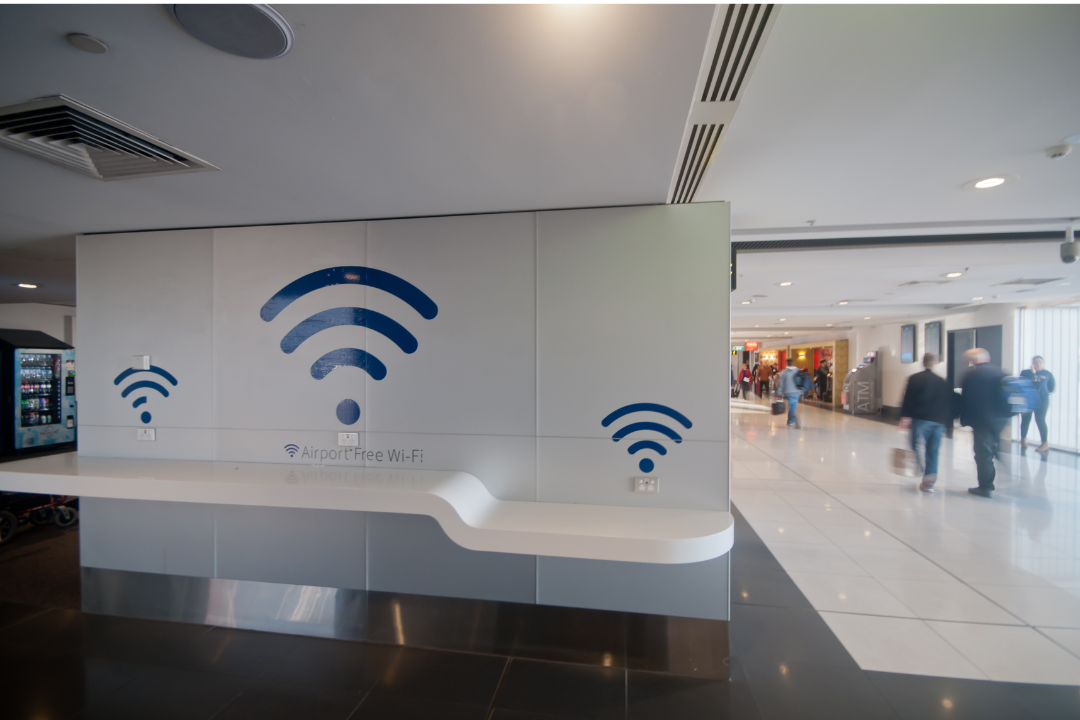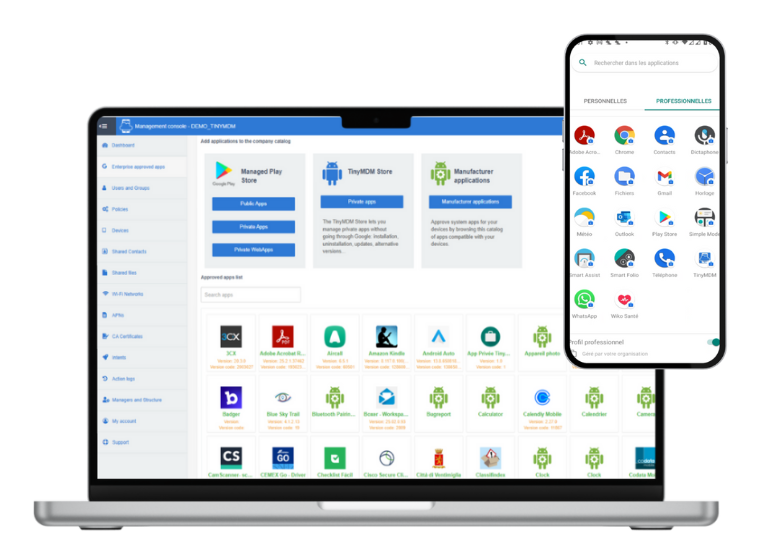Summer often brings greater flexibility in the workplace, with an increase in remote work, whether from public transport or a second home, for example. To simplify daily operations for their teams, some companies permit the use of personal devices for professional purposes, also known as BYOD (Bring Your Own Device). While this practice simplifies employees’ day-to-day, it also introduces significant risks to the security of business data. In this article, discover the five BYOD practices to adopt when using your personal device in BYOD mode. The goal is to provide you with best practices to ensure data security, thus guaranteeing a stress-free summer.
1. Avoid public Wi-Fi networks

Whether you’re waiting for your train at the station, your flight at the airport, or simply sipping coffee on a terrace, free internet access via a public Wi-Fi network seems convenient. These hotspots, which can also be found in hotels or restaurants, are convenient for checking your latest professional emails, making progress on an urgent project before leaving for vacation, or even just for entertainment.
However, this simplicity of access hides a darker reality: public Wi-Fi networks are mostly unencrypted or poorly secured. This means that all data you send or receive (login details, passwords, professional emails, confidential documents) can be intercepted and read by malicious individuals present on the network.
To guarantee a secure internet connection and thus preserve the confidentiality of your data, opt instead for using your cellular data if your Internet plan allows it. However, if you no longer have cellular data (4G/5G), you can use a VPN (Virtual Private Network) which protects your online activity, even when connecting to a public Wi-Fi network.
2. Use a secure password
This might seem obvious, but it’s still a too-common mistake: protecting your smartphone or tablet with a simple PIN (like “0000” or “1234”). In case of loss or theft, if the password is easily discovered, it provides direct access to all your data. In a few seconds, anyone can access all your data, professional emails, client documents, business applications, without you being able to react.
To avoid this scenario, it’s important to use a strong and unique password combining uppercase and lowercase letters, numbers, and special characters. Forget birth dates and 0000. Similarly, if you prefer to use a pattern, make sure it’s not simple to remember or guess. For additional security, enable fingerprint or facial recognition unlock, which allows only you to unlock your device without having to enter the password.
3. Don’t delay device updates until back-to-school
One of the most common security mistakes is neglecting updates. Whether it’s operating system updates or application-specific ones, each update is much more than a simple user interface improvement or the addition of new features. They primarily include security patches, often of major importance. WhatsApp experienced a security flaw a few months ago that potentially exposed the data of millions of users. They quickly released an update to fix this problem because such vulnerability, once made public, becomes a prime target for cybercriminals.
Updates should not be seen as constraints, but as shields in the protection of your data.
4. Remain alert to phishing attempts
During summer, there’s often an increased risk of phishing attempts (fraudulent techniques for gathering personal data) because people tend to be less vigilant. Clicking on an unknown link or opening a suspicious attachment is one of the most frequent errors in terms of cybersecurity. A simple click can have a high impact on the security of your personal and professional data.
It is important not to click on suspicious links or reply to SMS or emails that may seem suspicious, even if they come from known contacts (your manager, a family member, your bank…). It is important to check the sender and recontact them via another means in case of doubt to verify the authenticity of the message and avoid data theft.
5. Immediately notify your company if your device is lost
If your professional data is accessible on your personal device, it is essential to notify your employer if it is lost or stolen. Even if the device is not necessarily in the hands of a malicious person, you cannot be sure. That is why the employer must be notified to act as quickly as possible on their end.
A lost device can lead to a risk of confidential data leakage such as customer data, commercial, financial information, strategic plans or any other information that could harm the company. Also, if professional accounts are open, a malicious individual could connect to the internal network, access your email or business applications and thus create an intrusion into the system.
By notifying your employer, they can ideally delete access to all professional data present on your device if a BYOD policy is in place. Otherwise, they can at least block your access to certain professional accounts, change your passwords, etc. to limit the damage.
Implementing MDM software to fully enjoy your summer
The first crucial step is to define a clear and comprehensive internal policy regarding the use of mobile devices in BYOD mode. This policy must address aspects such as usage rules, security requirements, access management, and procedures in case of loss or theft. Once this policy is established, the role of MDM software becomes essential for its effective implementation at the company level.
TinyMDM, for example, offers a set of key features to make BYOD deployment and management easier:

Implementation of robust passwords
The MDM software can require the configuration of complex passwords not only for general device access, but also for professional profile access. This ensures that corporate data and applications are isolated and protected in case a third party accesses the device.
Centralized security settings management
Beyond passwords, TinyMDM also allows blocking the use of public Wi-Fi networks, significantly reducing the risks of sensitive data interception. The software also facilitates the management of professional application updates, ensuring that all critical applications are up to date and benefit from the latest security fixes.
Mobile Application Management (MAM) and content management
Thanks to MDM software, remotely install all authorized applications in the professional profile (business applications, email accounts, etc.) and share all authorized professional content (files, contacts, internal documents, etc.).
Remote wipe of the professional profile
In case of loss or theft of a device, via the TinyMDM administration console, it is possible to remotely delete the professional profile. This feature is vital as it allows erasing all professional data and applications stored on the device, thus preventing any intrusion or leakage of confidential data before potential exploitation occurs. Deleting the professional profile has no effect on the personal part of the device, which remains intact.
Via TinyMDM, the company can have better management and security of its professional data. However, in BYOD mode, the user remains the unique owner of their personal profile and associated data. The company has no visibility or control over the device’s personal profile. This clear distinction between the professional profile and the personal profile is crucial for employee acceptance of BYOD. TinyMDM offers valuable flexibility for the user:
- Pausing the professional profile: Especially during vacation periods or outside working hours, the user has the option to pause their professional profile. By pausing it, they temporarily close access to corporate applications and data. This allows for a complete disconnection while keeping the profile intact until the return to work.
- Autonomous deletion of the professional profile: If the user leaves the company or no longer needs the professional profile, they can remotely delete it from their own device. This feature gives the user full control over the management of their professional data on their personal device, while ensuring that corporate data is securely erased and in compliance with internal policies.
29 juillet 2025
